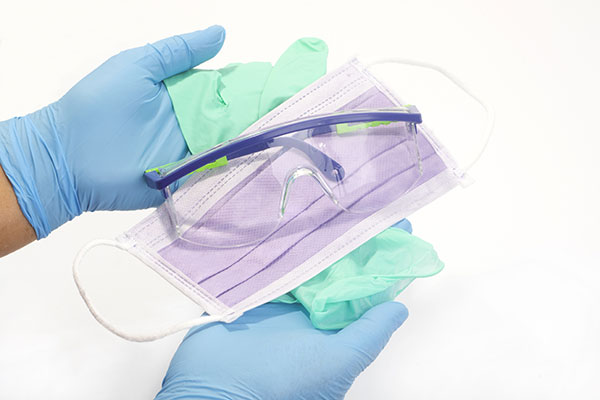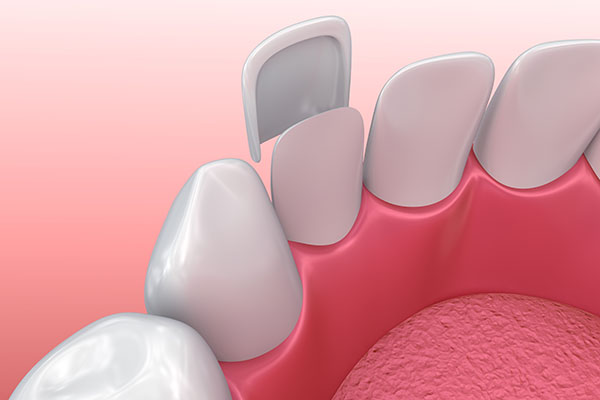What Does PPE per CDC Guidance Involve for Mission Valley Dental Arts?

The use of PPE per CDC guidance is for a primary objective, which is to protect dental care professionals at Mission Valley Dental Arts and patients from infection. The CDC guidelines cover selection and use of Personal Protective Equipment, or PPE to ensure safe practices when donning, using and removing PPE per CDC guidelines. This goal also improves patients’ safety. According to the Occupational Safety and Health Administration, PPE is “specialized clothing or equipment worn by an employee for protection against infectious materials.”
Details of PPE per CDC guidance
According to the CDC, donning of PPE should happen before meeting with the patient. The PPE is designed to protect both the dental professional and patient by restricting direct contact and contamination of inert surfaces around the dental office. The PPE is taken off and disposed of carefully. Respirators are removed outside the treatment room. Dentists will perform proper hand hygiene after removing PPE per CDC guidance.
The sequence for donning PPE
Dental professionals wear gowns first before wearing masks or respirators. Then, they will wear protective eyewear or face shields, followed by gloves. The combination of PPE used has implications on the order of placement. It is vital to follow the protocol for PPE per CDC guidance.
There are two main physical sides of PPE – contaminated and clean. Contaminated sides are generally on the outside. This part of the PPE has or has possibly been in contact with materials, body sites or environmental surfaces that may have been inhabited by infectious organisms. Clean areas are typically inside, ties around the head or neck and back of the overalls.
The order of removing PPE per CDC guidance is gloves first, then protective eyewear and face shields. Gowns come off next, and finally, respirators or masks. PPE removal should occur close to the doorway of the treatment space, not outside. The only exclusion is respirators, which can be taken off outside of the treatment room, upon closing the door. Hand hygiene facilities should be ready immediately, which should include a sink with hand hygiene products or alcohol-based hand sanitizers.
When to use PPE per CDC guidance
PPE usage is an essential aspect of standard infection control precautions. Standard precautions assume that saliva, bodily fluids and blood from any patient is infectious. The use of PPE per CDC guidance and other infection control protocols is important to prevent transmission in dental and medical settings. The nature of the interaction between patients and dental professionals determine the use of PPE. Ideally, any procedure that is likely to generate spatter, aerosols, fluids, secretions or excretions require the use of PPE per CDC guidance, including gloves, gowns, masks, protective eyewear or face shields.
Outer protective clothing protects against contamination, especially when there is a risk of skin or cloth contamination. The same situations that require masks, gloves, and protective eyewear also need protective clothing. Examples include smocks, lab coats, aprons, gowns and clinical jackets.
PPE clothing should be resistant to fluids but not necessarily fluid-proof. Protection and comfort are both important parts of PPE per CDC guidance. The aim is to cover most of the regular work clothes. The two basic types of protective clothing are disposable and reusable, which must be changed if visibly contaminated at the end of the day.
The use of PPE per CDC guidance
The use of PPE per CDC guidance helps to protect dental practitioners adequately from exposure to infections in the dental office.
Request an appointment here: https://www.missionvalleydentalarts.com or call Mission Valley Dental Arts at (619) 805-4248 for an appointment in our San Diego office.
Check out what others are saying about our services on Yelp: Read our Yelp reviews.
Recent Posts
Dental veneers are made of porcelain or composite resin material. The shells cover the front surface of a patient's front teeth and can be used to change the size, shape, or color of teeth. These restorations have been used for years to transform smiles, but some may wonder about their permanency. There are several reasons…
To progressively and accurately straighten teeth, Invisalign® employs cutting-edge technologies, including computer modeling and computer-assisted manufacturing. Read on to learn more about this teeth-straightening option. The patient, as with any orthodontic therapy, plays an important part in the process. The quality and timeliness of your outcomes all depend on the patient's dedication to treatment instructions.The…
Dental veneers, ceramic or composite shells that fit over teeth to restore damage or make cosmetic corrections, are a long-lasting, durable treatment, but do eventually need to be replaced. This guide covers some of the questions patients often have about replacing this dental work.Not every set of veneers lasts the same amount of time, but…
Invisalign® is a popular procedure that uses transparent aligners to correct dental misalignment. Their design makes them a lot more comfortable than conventional braces. Since Invisalign aligners are removable, you can eat all of your favorite meals and participate in all of your favorite activities without worrying about having to go to the dentist for…





